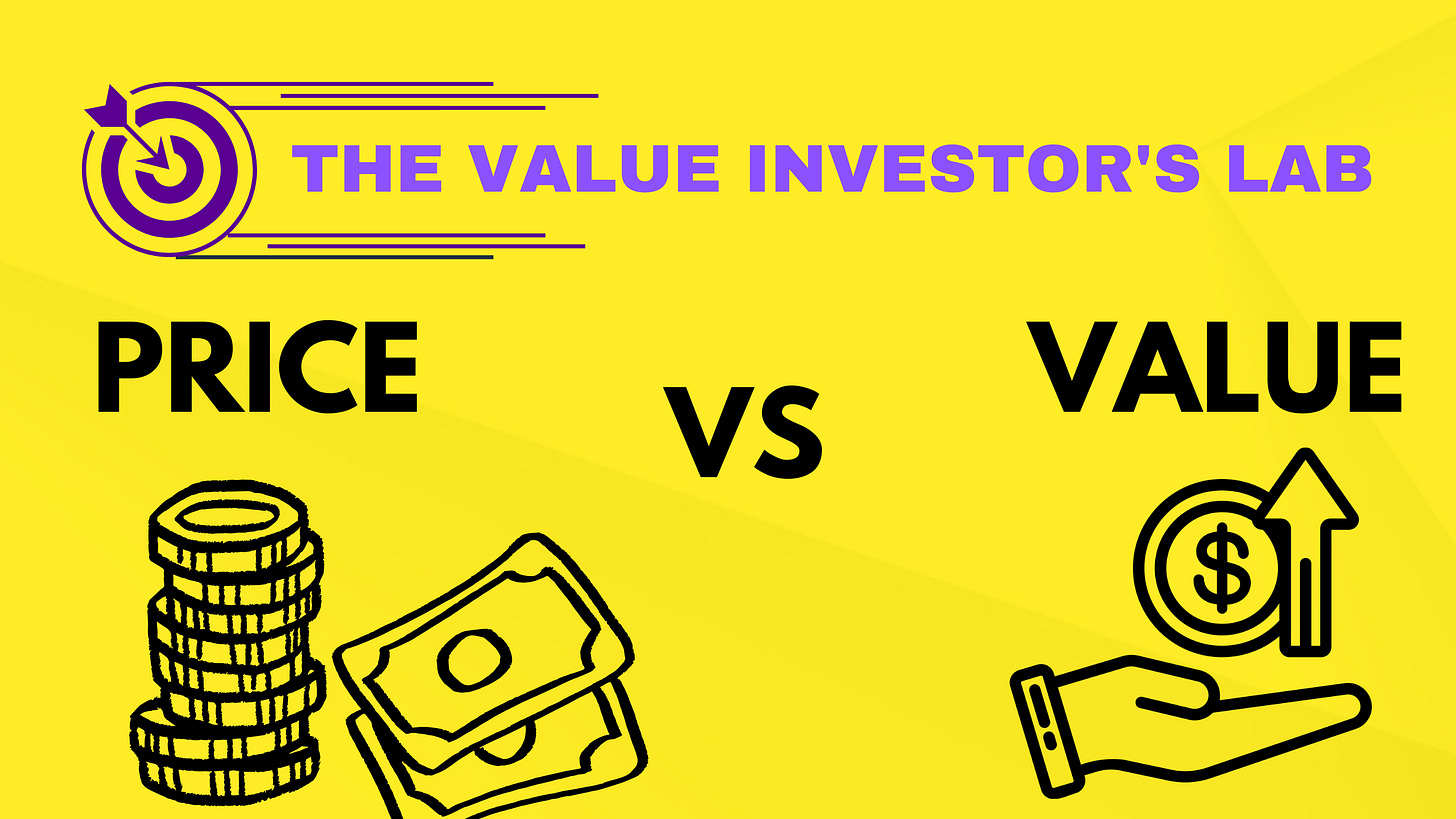Value is not obvious
Primary Section | Article no: 1 | Stop chasing the price tag!
Today, Let’s understand the value and the relationship between the price and the value of stocks. Many investors fall into the trap of chasing attractive stock prices without understanding their true value. While dreaming of multi-bagger returns, they often ignore the quality of a company's business. The result? Costly lessons. The sooner one learns to focus on value over price, the sooner one can unlock the potential of value investing.
What exactly is value?
Imagine you are going to buy a book from a local bookshop. Will you look for the content it has or the colourful and attractive front cover? Anyone who loves reading will pay for the writing quality of the author, not for the attractive front cover. The contents and quality of writing that gives you long-lasting knowledge and wisdom are the true values of that book.
Similarly, In the context of the stock market, the bookshop is a stock exchange platform; the book you like to buy is the equity of a company; The price at which you buy is the market price; The genre you choose is the sector in which the company operates; The author and the publisher are the promoters of that company; and the contents & the quality of writing are the quality of the business and its management. The quality of earnings, cash flow, assets, and growth potential are the true values of the stock. In other words, value refers to the intrinsic worth of a stock based on its fundamentals.
Why do value is not readily apparent?
Just as a book's content requires careful reading to grab the content effectively, the true value of a stock requires thorough research. The surface-level observation does not make a stock the better one. The deeper analysis gives a clear picture of a company and its business state that helps you determine the true value of the company. It can be achieved by studying the company's annual reports, income statements, balance sheets and cash flow statements and identifying the right input to apply to the right valuation model. We'll look into the different valuation techniques later on in this series.
To understand a stock’s true value, you need detailed analysis, knowledge, and big efforts. The lack of resources available regarding the company's future growth plan, market condition and market position makes it much more difficult to find the true value.
Surface-level observations are misleading—both in books and stocks.
Why does the value of a company change?
The value of a company never settles in the same place. It's more or like interconnected with the Industry's condition and that company's position in that particular sector. The competitive advantage of a company over its competitors determines its position in the sector. It depends on two things — Cost advantage and value advantage — The cost advantage is the ability of a company to sell its products or services at relatively lower prices and the value advantage is the ability of a company to distinguish its products or services from others. The Sage of Omaha often calls it ‘ Moat’.
If a company has significant market leadership and a competitive edge that makes them continue experiencing the same in future, it is said to have the moat. The intrinsic value of that company can be potentially huge. It may continue inclining more and more until there is a disruption to its competitive edge.
Relationship between price and value
The Dean of Valuation always emphasizes one must focus more on value primarily rather than the price. In valuation, the true value of a stock determines how much you should pay to maximize long-term gains. As a Value Investor, you must believe the stock price is going up and down in a specific period based on the quality of the earnings in the same period. As earnings grow, the price goes up. However, the stock price often goes up several times higher than the growth in earnings. This is because the market is over-recognising the present earnings growth or expecting further huge growth in earnings in the next few periods that justifies the current market price. One of the sound principles of Value investing is to buy a stock at a price less than its intrinsic value allowing a margin of safety in the intrinsic value calculation. Eventually, the price per share increases and when it goes above its intrinsic value at that time, sell those shares. The margin of safety can be 5%, 10%, or even 20%, depending on the user interest. The purpose is to counteract the risk of uncertainties. We dive more deeply into the valuation techniques and their calculation later on in this series.
Price is what you pay, and the value is what it's worth intrinsically.
Read annual reports to assess cash flow and growth potential.
Learn different valuation techniques to calculate intrinsic value.
Always apply a margin of safety when buying stocks.
Understanding the value of a stock is not just a skill—it’s a mindset. The more you focus on uncovering the true value of businesses, the closer you get to making smarter, more profitable investment decisions. Remember, every successful investor started with the basics, just like you are now. As we dive deeper into value investing and its techniques in the upcoming posts, stay curious, stay patient, and most importantly, stay focused on the value over the price. This journey is not about quick wins but about building lasting wealth. Ready to take the next step? Let’s unlock the secrets of value investing together!
⚠️Disclaimer:The Value Investor's Lab is dedicated to providing educational content to help readers understand the principles of value investing. We do not promote or recommend specific companies, securities, or investment strategies. Readers are encouraged to consult registered and approved financial advisors for personalized investment decisions.









